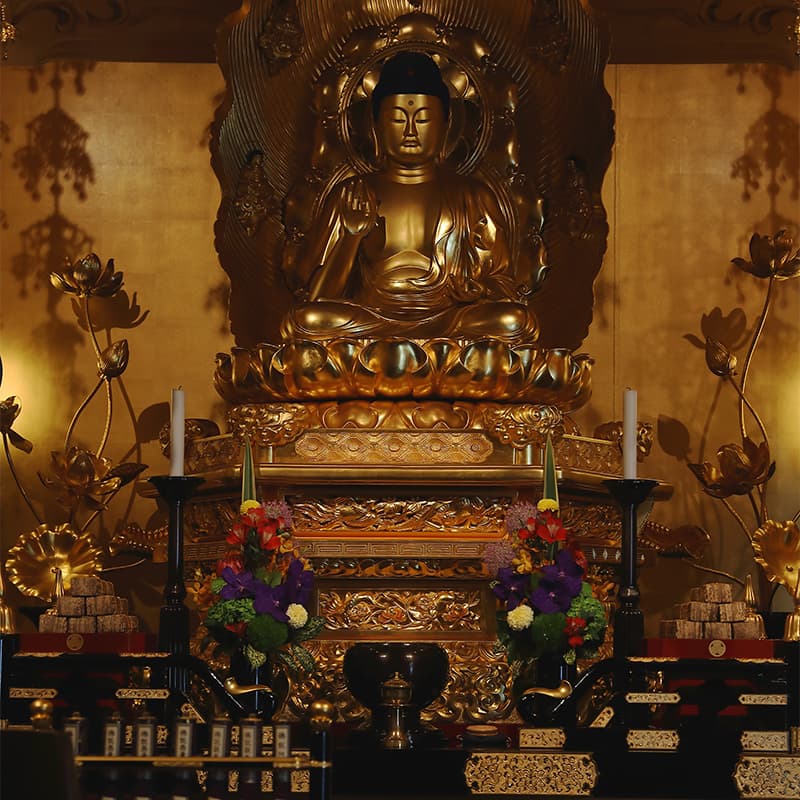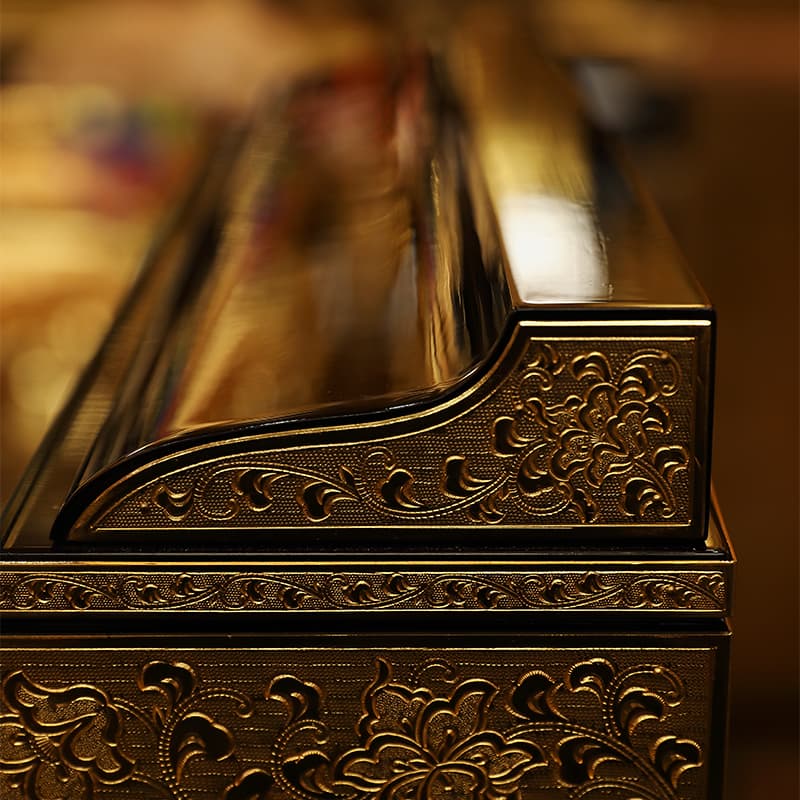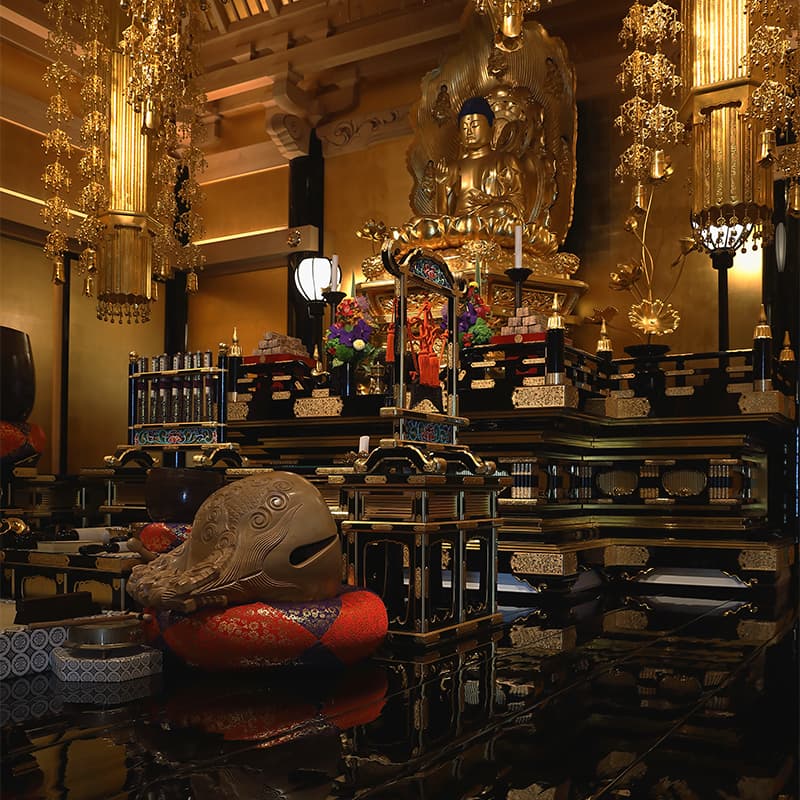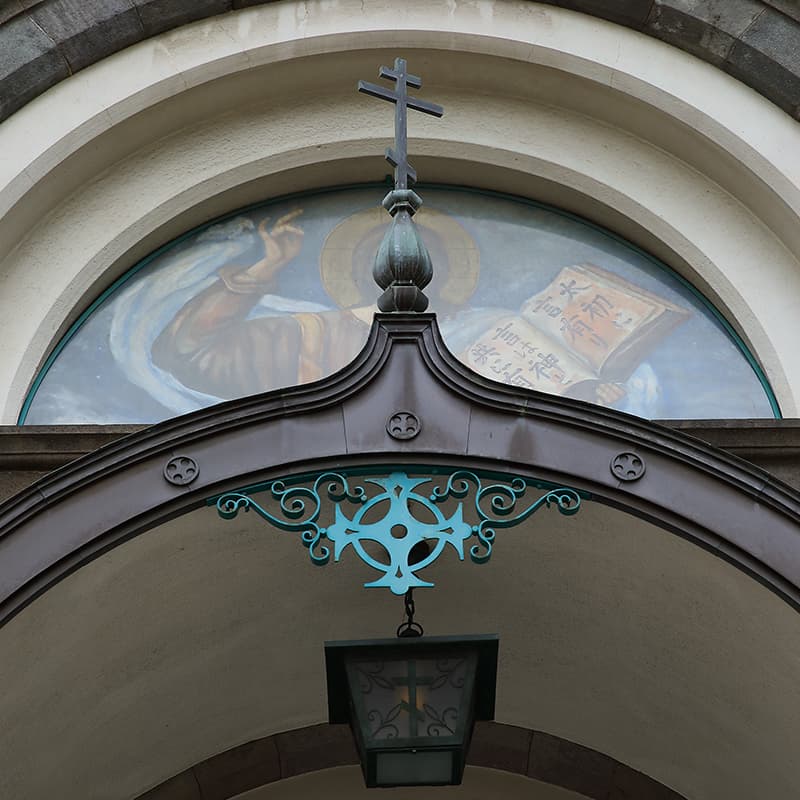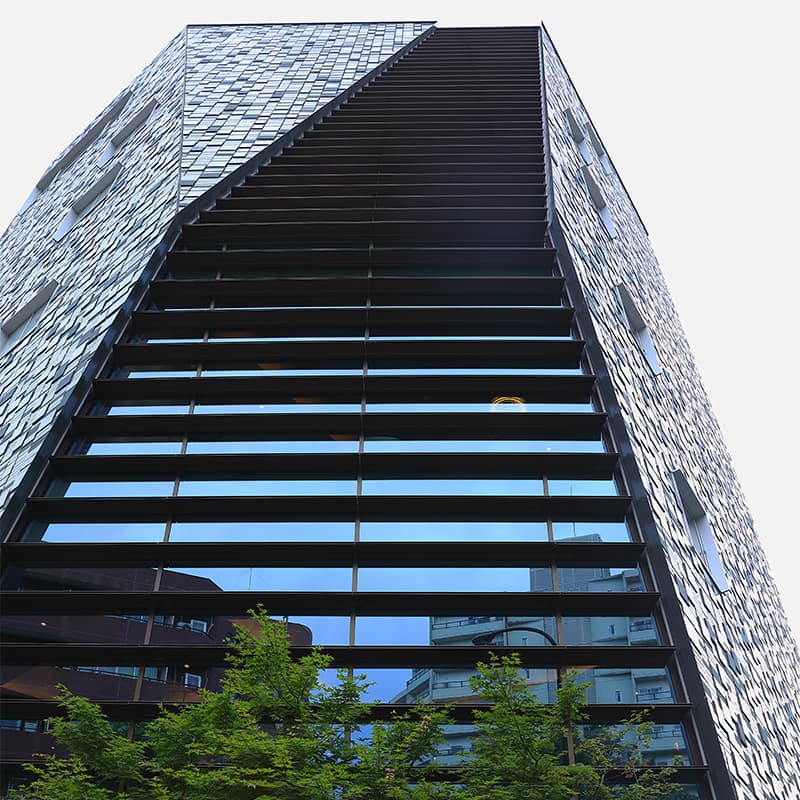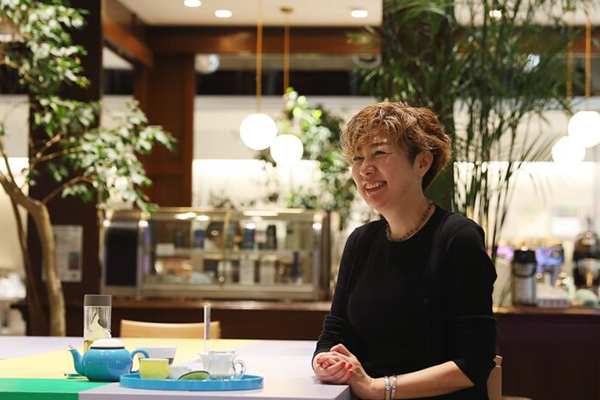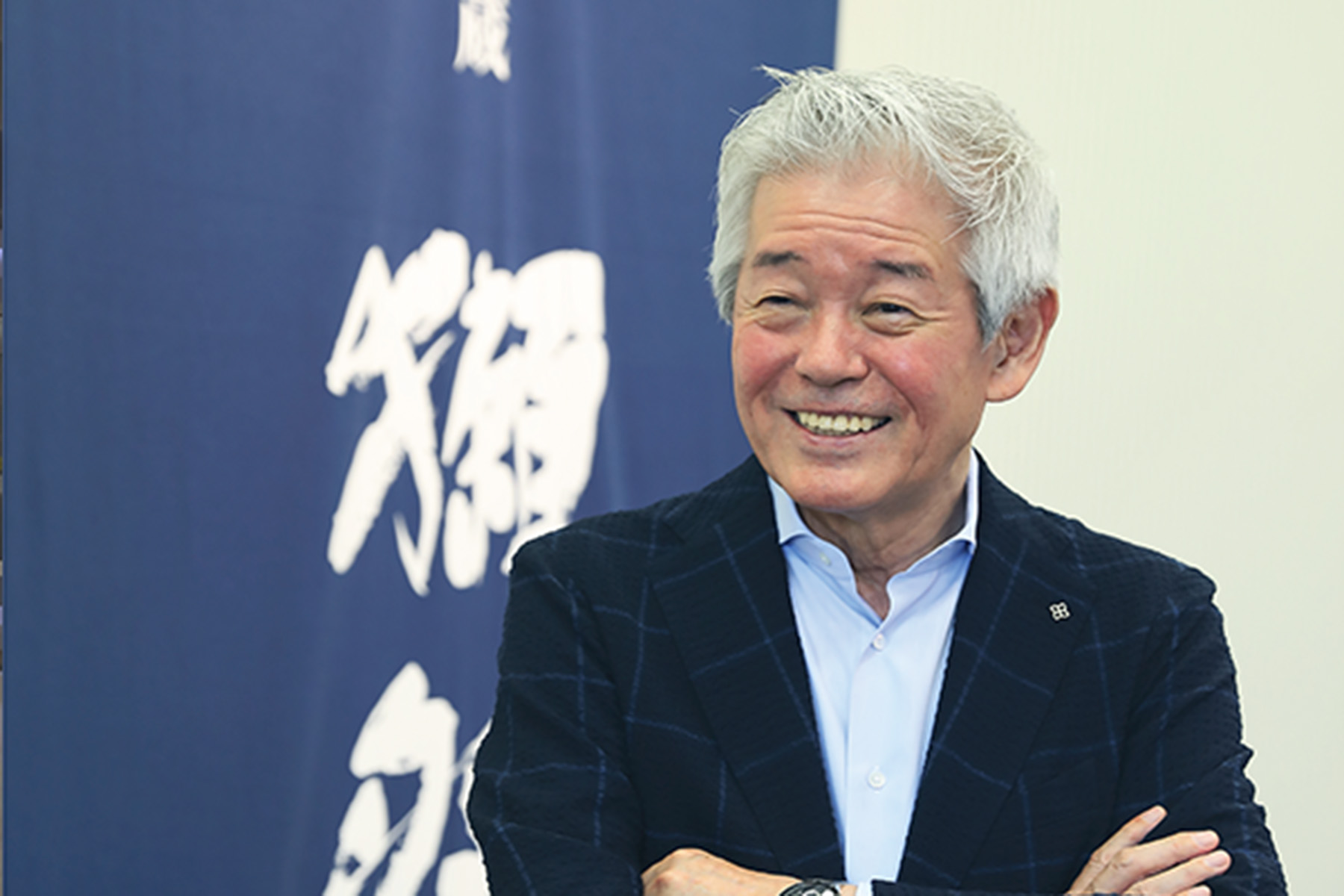
祈りの所作。
祈りの所作。
たまには祈りについて考えましょうという話。

世界に平和は、なかなか訪れない。社会には激しい格差が生まれ、インターネットには次々と新手の詐欺があらわれる。なんだか落ち着かない、ただただ平穏に暮らしたい。そう思うときに、祈ることがある。特別に信仰しているものがあるわけではないけど、手を合わせている。祈るという行為は国や宗教を問わず、すべての人間のDNAにインプットされているのでは? 祈りって何だろうと考える、そんな機会をつくる今号の「yoff」。じっくり見て、あなたなりの祈りを見つけてください。
祈りの所作。
Feature | 2024.07.24
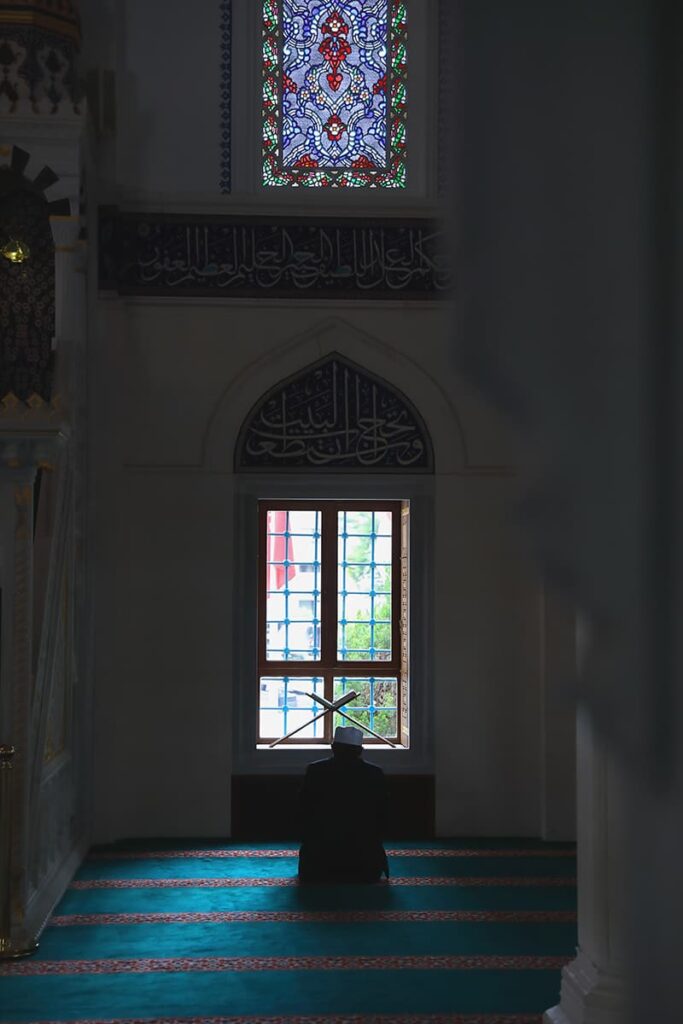
東京ジャーミイ・ディヤーナト トルコ文化センター
世の中には多くの宗教があり、それぞれの祈りがある。
それらの所作を少しでも知ると、人が祈ることの意味が見えてくるかもしれない。
人は祈る。 家族のために、 世界のために、 未来のために、 そして自分のために。日本では、 祈りは生活のさまざまな場面に根づいている。 家に神棚があれば柏手を打ち、仏壇があれば手を合わせる。朝日に向かって礼拝をする人もいれば、食事の前に頭を軽く下げて「いただきます」という。
歳時のなかにも祈りは多くある。正月の初詣や彼岸の墓参り、クリスマスのミサ。 そしてお盆には先祖を迎えるための準備を整え、心静かにそのときを待つ。
祈りは心地いい。手を合わせ、目を瞑り、神に、仏に、先祖に語りかける。いつもお世話になっています。ありがとうございます。 こんなことやあんなことがありました。 そしてよろしくお願いします。
祈りは安心。 叶うかどうかはわからない。でも、それでも信じることができる。 一瞬でも、なにかにすがることができる。祈りは人に、大きな安心感をあたえてくれる。
祈りってなんだろう? 祈ることが多いからか、 ときどき、自分はなぜ祈っているのだろうかと思う。世界には多くの宗教があり、それぞれの教義や信仰対象がある。 なのに、祈るという行為は共通している。
みんなはなぜ祈るのか? その答えの入口に立ちたくって、イスラム教のモスクと正教会、 神社、そして寺を訪ねてみた。それぞれに異なる祈りについての話を聞きながら、でも根の部分は同じことを言っているような、そうでないような。
宗教はどれも奥深く、一朝一夕で理解できるものではないことはわかっている。でも、とにかく、話を聞けばぼんやりとでも、祈りの正体が見えてくるかもしれない。そんな想いから、今号の特集が始まった。
People pray for their family, the world, the future, and themselves.
In Japan, prayer is deeply rooted in daily life. Clapping hands at Shinto altars, pressing hands together at Buddhist altars, bowing to the morning sun, or saying “itadakimasu” before meals.
Seasonal events also involve prayers. The first shrine visit of the New Year, equinox grave visits, and Christmas mass. During Obon, people prepare to welcome ancestors and wait quietly.
Praying feels good. People join hands, close their eyes, and speak to God, Buddha, or ancestors. We are always in your care. Thank you. This and that happened. Please keep watching over us.
Prayers are comforting, even if fulfillment is uncertain. They provide belief and something to rely on, bringing great comfort.
What is prayer? As I pray often, sometimes I wonder why I pray. The world has many religions, each with its doctrines and deities, but they all have praying in common.
Why do people pray? To find out, I visited a mosque, an Orthodox church, a Shinto shrine, and a Buddhist temple. Listening to the various stories, the core messages of prayer were both similar and different.
Each religion is profound and not easily understood, but listening to these stories might shed some light on the nature of prayer. Such thoughts inspired this issue’s special feature.
There are many religions, each with its prayers.
Learning about these practices can help us understand the meaning of prayer.
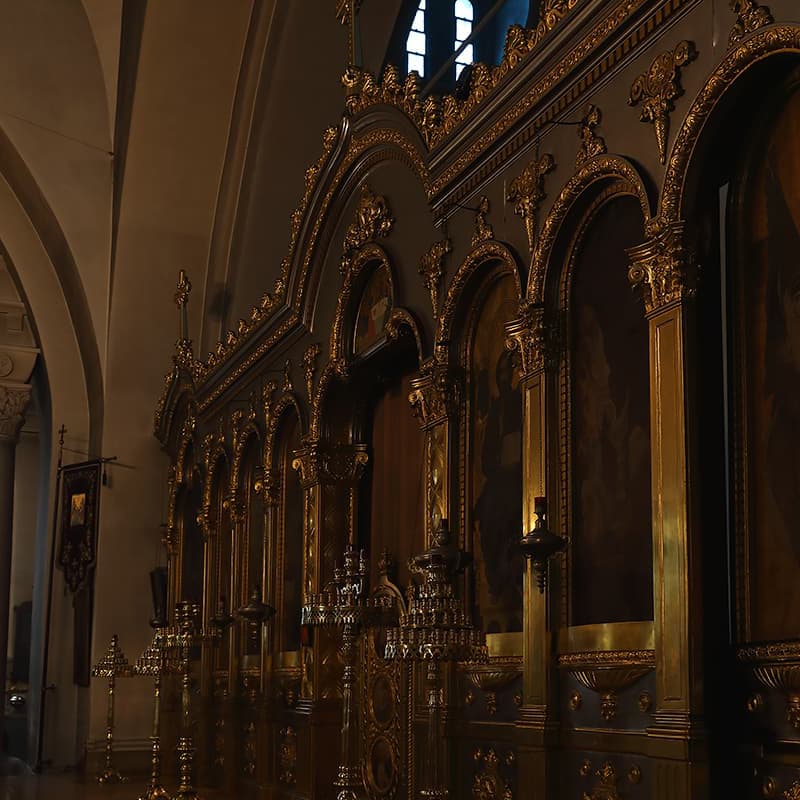
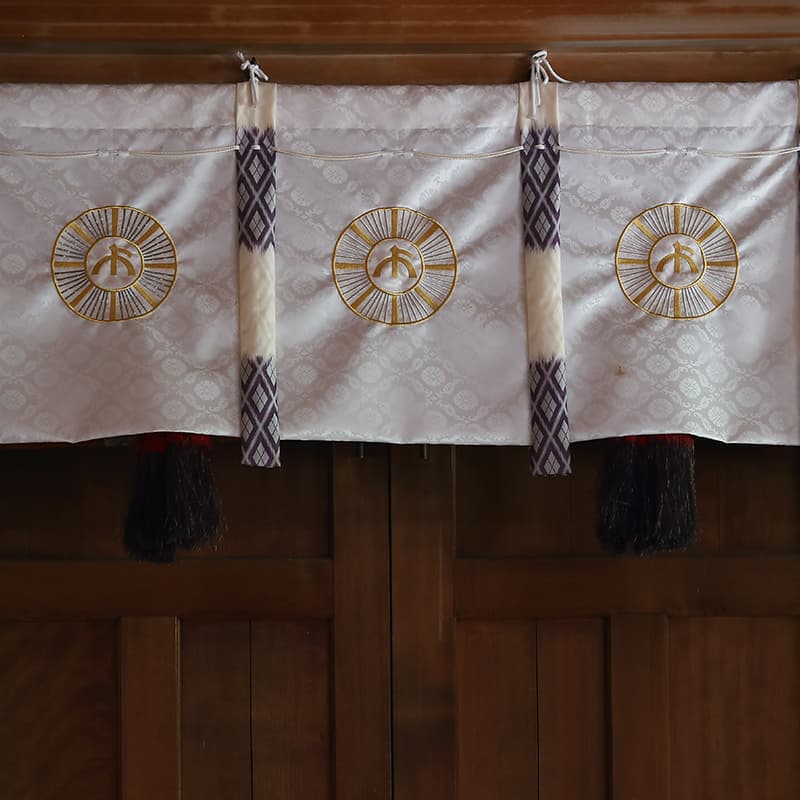
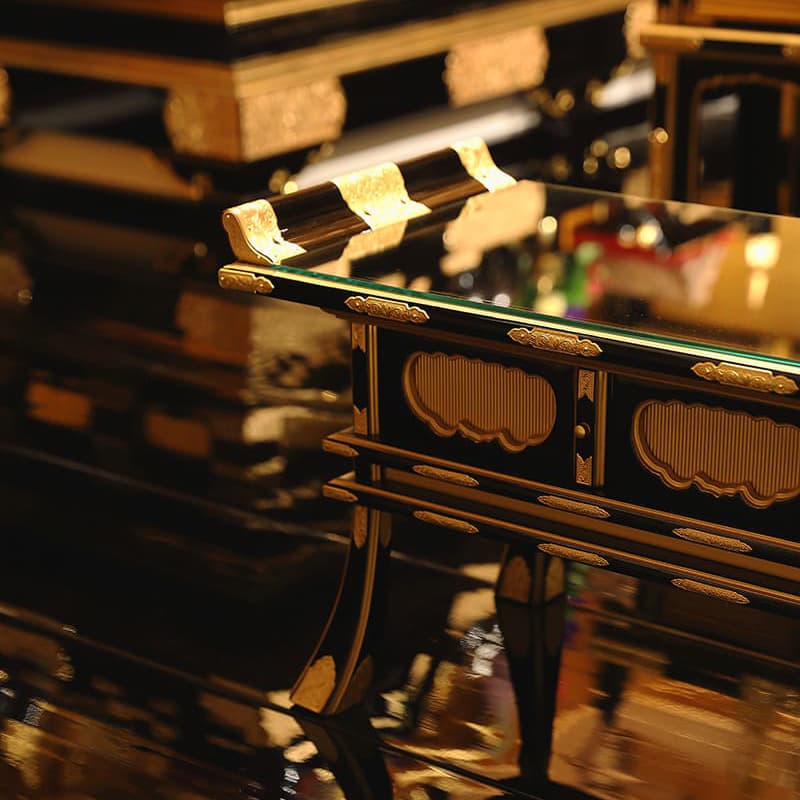
a.東京復活大聖堂(ニコライ堂)
b.千勝神社
c.瑞華院 了聞
人生の道行きを知る祈りは、生きるための基本。
Feature | 2024.07.24

[ 東京ジャーミイ・ディヤーナト トルコ文化センター ]
芸術的装飾が施された空間で、神と直接に向き合いながら礼拝と祈りを捧げる。
そこにある神秘はどこまでも美しい。
住宅街のなかに、その威容を誇る建物がある。 東京ジャーミイ・ディヤーナト トルコ文化センター。 日本最大級のイスラム教の礼拝所=モスクだ。
その建築は伝統あるオスマン様式。芸術的なアラベスク模様の装飾が施された内部は見学者が後を絶たず、 集団礼拝の日にはムスリムたちが集い、礼拝堂でアッラーへの祈りを捧げる。
「まず見ていただきたいのが、この空間の美しさです」 と語るのは東京ジャーミイ・ディヤーナト トルコ文化センターで広報・出版を担当している下山 茂さん。モスクの内部はシンメトリーな空間分割が美しく、精緻なカリグラフィ、優美なシャンデリア、色鮮やかなステンドグラス越しの光が神秘的な雰囲気を醸している。「そして最も美しいのが礼拝堂。 ここは祈りの空間であり、神の空間です」。 確かにこのドームには神がかった美しさがある。
「私は、礼拝と祈りは違うと考えています。 神へ感謝を伝えることが礼拝であり、お願いをするのが祈りです。 イスラム教では聖職者はおらず、礼拝と祈りをする人は神と直接に向き合うことができます」。イスラム教は一神教、この礼拝堂という神聖なる空間で、人は唯一なる神と相対する。
「イスラム教ではコーランを唱えます。コーランには生きることのすべてが書かれています。 私は、コーランは人生のガイドブックだと思っています。 人生という長い旅のなかで迷える人を、 コーランが導いてくれます」。 人は弱いから、礼拝と祈りを通じ、またコーランを読むことで神から力を与えてもらう。 だから謙虚な姿勢であることが大切だと下山さんは言う。 「カラダとココロを養うために、カラダには食事が、そしてココロには礼拝と祈りが必要です。 前を向いて生きていくために、それはなくてはならないもの」。
生きるための基本、それがイスラム教の礼拝であり、祈りなのかもしれない。
Prayers for life’s path are foundational for living.
Offering worship and prayers directly to God
in beautiful decorated, mystical spaces.
In a residential area stands the magnificent Tokyo Camii and Diyanet Turkish Culture Center, Japan’s largest mosque.
Its traditional Ottoman architecture and artistic arabesques attract a steady stream of visitors. On days of communal prayer, Muslims gather in the prayer hall to offer prayers to Allah.
“The first thing to notice is the beauty of this space,” says Shigeru Shimoyama, in charge of public relations and publications at the Center. The mosque’s interior boasts beautifully symmetrical divisions of space, intricate calligraphy, graceful chandeliers, and colorful stained glass, creating a mystical atmosphere. “The most beautiful part is the prayer hall, a space for prayer and for God.” Indeed, the dome has a divine beauty.
“I believe that worship and prayer differ. Worship expresses gratitude to God, while prayer makes requests. In Islam, without clergy, worshippers face God directly.” Islam is monotheistic, and in this sacred space, the prayer hall, one stands before the one and only God.
“In Islam, we recite the Quran. The Quran contains everything about living. I believe the Quran is a guidebook for life. It guides those who are lost in the long journey of life.” People are weak, so through worship and prayer, and by reading the Quran, they receive strength from God. Shimoyama says that this is why humility is important. “To nourish the body and soul, the body needs food, and the soul needs worship and prayer. These are essential for moving forward in life.”
The basics of living—that may be what worship and prayer in Islam are.


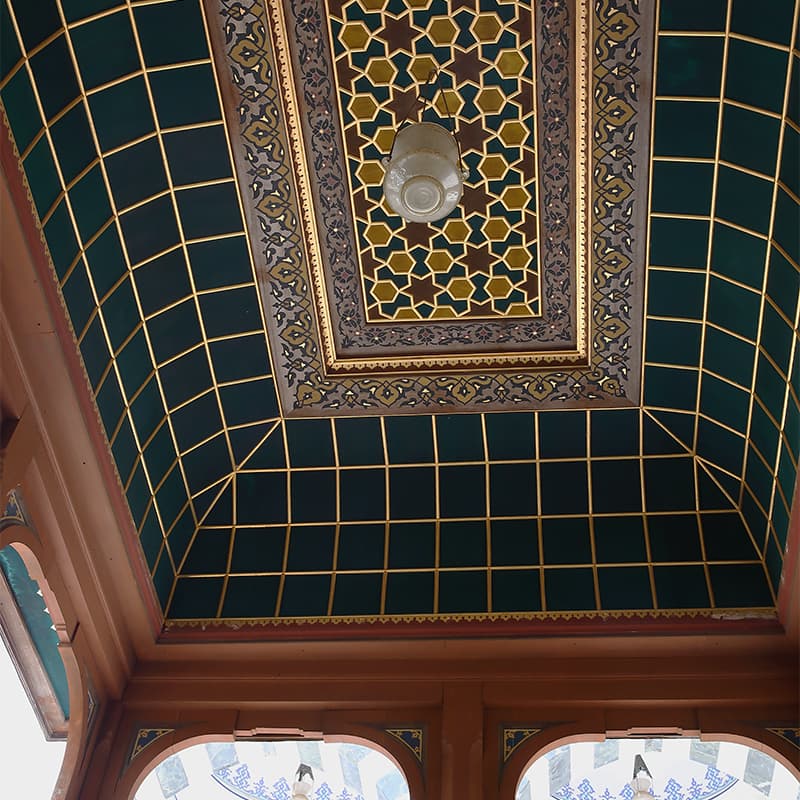
東京ジャーミイ・ディヤーナト トルコ文化センター
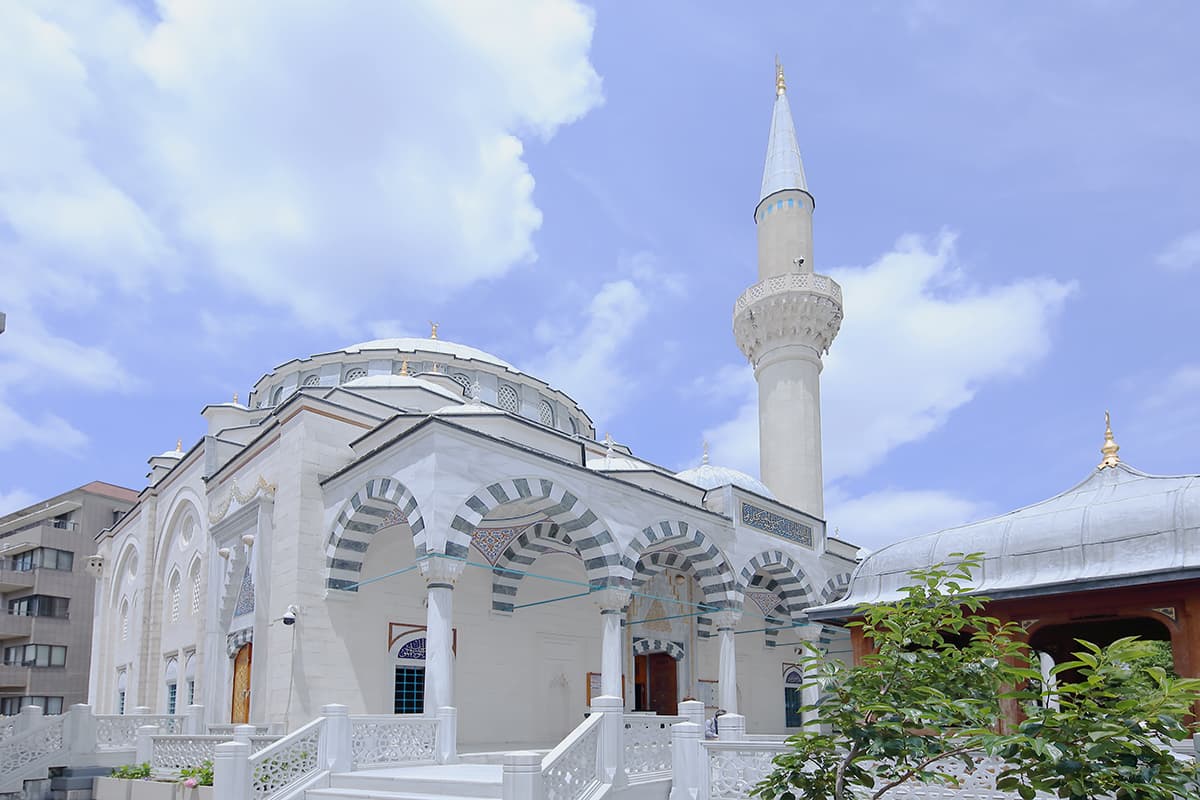
利他の祈りを行うことで人は強くなり、そして幸福になる。
Feature | 2024.07.24
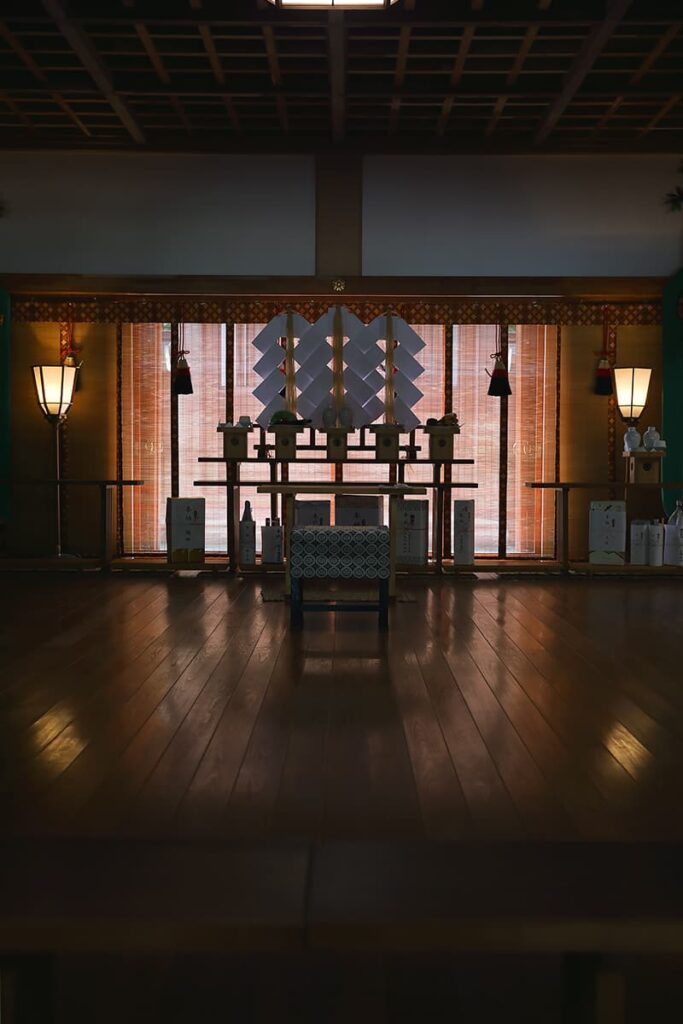
[ 千勝神社 ]
神に仕える身として、静寂に包まれた社殿で祈りについて考えを巡らす。そうして見えてきたのは、祈りによる人の成長。
パワースポットと呼ばれる場所がある。そこには生命力や活力、超自然なエネルギーがあふれているという。そんなパワースポットとして注目されているのが茨城県つくば市にある、創建1500年超の猿田彦大神を主祭神とする千勝神社。
確かに境内に足を踏み入れたとたん、周囲の気が変わる。凜とするというか、爽やかというか、違いを確実に感じることができる。交通の便が良いわけではないのに、次々と参拝客が訪れる。ここにある “気” に誘われてくるのだろうか。そして訪れた人たちはそれぞれ、ここで何を祈るのか。
「祈りは祈りとしてあり、そこに解決を求めるものではありません」。 そう語るのは千勝神社の禰宜である松本哲弥さん。祈りに解決を求めはじめると、それは依存になってしまうという。「人は幸せになるために生きています。願いが叶わなくても幸せにはなれる。喜びをもって幸せに生きるために、そして真の幸福を感じるために祈りが必要なのです」。これは神主として、信仰者として神に仕えてきた個人の考えだと前置きをしながら松本さんの祈りについて話はつづく。「信仰とは自らの生き方を定めるものです。生き方が定まれば不安や迷いが無くなります。その信仰は祈ることがすべてではなくて実践が必要。しかし、祈りがなければ信仰が成り立たないことも事実です」。
そんな祈りは、結局は自分のためのもの? そんな問いかけに松本さんは「神仏に心がつながるためにも、利他の祈りは欠かせません。 私は、我々の願いなどは祈らずとも通じていると思っています。 世界の平和や他人のための祈りを行うことで神仏の力が備わり、我欲に縛られない本来のあるべき姿、喜びをもって生きる自分が見えてくるのではないでしょうか」と答えてくれた。 幸せに生きるために人を成長させる、それが松本さんの考える祈り。
Altruistic prayers make people
stronger and happier.
As God’s servants, we contemplate prayer in the shrine’s silence.
Praying leads to personal growth.
Power spot are places of vitality, energy, and supernatural power. One famous power spot is Chikatsu Shrine in Tsukuba City, Ibaraki Prefecture. Founded over 1500 years ago, it enshrines Sarutahiko Okami as its main deity.
As soon as you step into the precincts, the atmosphere changes. It’s a distinct feeling, refreshing, invigorating. Despite its inconvenient location, worshippers continuously visit. Are they drawn by the energy? What do they pray for?
“Prayer exists as prayer; it doesn’t seeks solutions,” says Tetsuya Matsumoto, senior priest of Chikatsu Shrine. Seeking solutions through prayer can lead to dependency. “People live to be happy, even if their wishes are not granted. Prayer is essential for joy and true happiness.” Matsumoto goes on talking about prayer, stating that these are his personal views as a priest and a believer serving God. “Faith determines one’s way of life. Once your way of life is decided, anxiety and confusion go away. Faith is not all about prayer; it requires practice. However, it is also true that faith cannot exist without prayer.”
So, is prayer ultimately for oneself? Matsumoto says, “Altruistic prayer connects us with the deities, Buddha, and our hearts. Our wishes are understood even without explicitly praying for them. Praying for world peace and others grants us the power of the deities and Buddha, allowing us to live joyfully, free from selfishness.”
Prayer, Matsumoto believes, helps people grow to live.
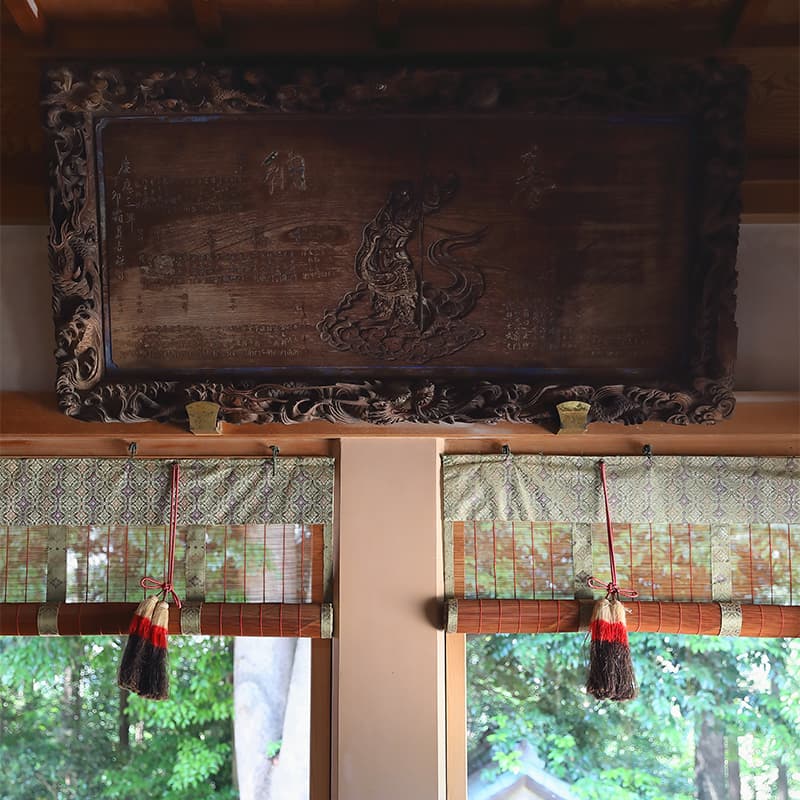
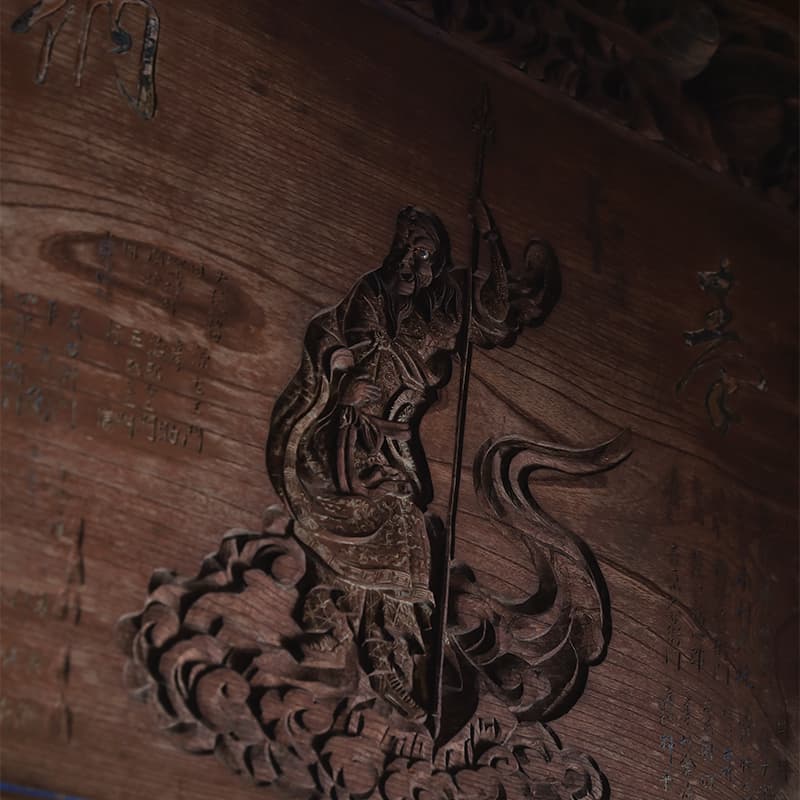

人間本来の姿を取り戻すため、祈り、そして神と一体になる。
Feature | 2024.07.24
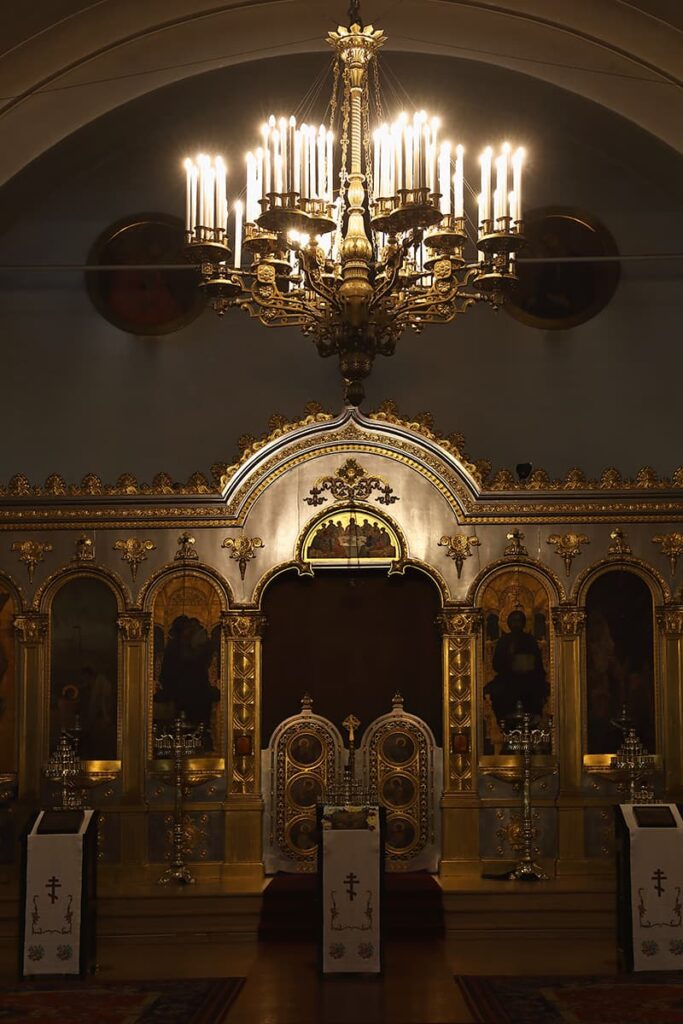
[ 東京復活大聖堂(ニコライ堂) ]
原点はイエス・キリストと弟子たちの生活にある。時代に流されることなく、基本を守り抜く。そうして祈りは強く、深くなっていく。
キリスト教にはさまざまな宗派がある。 なかでも「キリスト教三大教派」といわれているのがローマ・カトリック教会とプロテスタント教会、そして正教会。 ローマ・カトリック教会とプロテスタント教会は西ヨーロッパを中心に伝播し、 正教会は中近東からギリシャ、バルカン半島といった東ヨーロッパ地域に定着した。そんな正教会の聖堂のひとつが、 神田駿河台にある「東京復活大聖堂」。
大教主ニコライによって1884年から7年の歳月をかけて建てられた聖堂は、 関東大震災で被災した後、 およそ6年をかけて復興したという。この日本有数のビザンチン建築は威厳があり静謐。 正教会特有の八端十字架が掲げられた空間にはイコンが並び、 厳かで、 しかし心地いい空気に包まれている。
この聖堂で信者たちは “主、イイスス・ハリストス、神の子よ、我を憐れみ給え” と言葉にし、祈るといわれている。 「その祈りの言葉は、決まりではありません。 ただ、神の名前を繰り返しながら、神と一体になるという考えはあります」。 そう語るのは日本ハリストス正教会教団の長司祭であるミハイル対中秀行さん。 「礼拝は、基本的にはキリストが復活した日曜日にあります。しかし祈りは聖堂だけでなく、家でも、どこででも行ってかまいません」。
正教会では一年が、暦に従って進んでいく。 もちろん、 その暦はキリストが復活した日が中心になっている。 「私たち正教会は発展や進化をすることなく、キリスト教本来の姿を忠実に守っています。 原点にあるのはキリストと弟子たちの生活です」。 正教会では教義を思想としてではなく、生き方を通して伝授していくと対中さんはいいます。そうして信者たちは人間本来の姿に戻っていく。 「私たちは祈ることで神に近づきます。祈るかどうかは自分で決めることができます。だからこそ、祈りに意志が生まれ、神への愛が深まっていくのです」。
正教会では祈ることで神と一体になり、そして人間となることができる。
To regain our true nature, we pray and become one with God.
The origin lies in the life of Jesus Christ and his disciples:
staying true to the basics amid changing times,
strengthening and deepening prayer.
Christianity has various denominations. The three major branches are the Roman Catholic Church, the Protestant Church, and the Orthodox Church. The first two spread mainly in Western Europe, while the latter established itself in Eastern Europe, from the Middle East to Greece and the Balkan Peninsula. One Orthodox cathedral is the Holy Resurrection Cathedral in Kanda Surugadai, Tokyo.
Built over seven years starting in 1884 by Archbishop Nikolai, it was damaged in the Great Kanto Earthquake and took about six years to restore. One of Japan’s rare Byzantine structures, it is majestic and serene, adorned with Orthodox eight-pointed crosses and icons, creating a solemn yet comforting atmosphere.
In this cathedral, believers pray, “Lord Jesus Christ, Son of God, have mercy on me.” “The words of prayer are not fixed. However, the idea is to become one with God by repeatedly invoking His name,” says protopriest Michael Hideyuki Tainaka of the Orthodox Church in Japan. “Worship is usually on Sundays, the day of Christ’s resurrection, but prayer can be conducted not only in the cathedral but also at home or anywhere else.”
In the Orthodox Church, the year follows the liturgical calendar centered on Christ’s resurrection. “The Orthodox Church faithfully follows the original form of Christianity without changes or evolution. The starting point is the life of Christ and His disciples.” Tainaka explains that the Orthodox Church teaches its doctrines not as an ideology but as a way of life, helping believers restore their original human nature. “Prayer brings us closer to God. Choosing to pray strengthens our will and deepens our love for God.”
In the Orthodox Church, prayer unites one with God, making one truly human.
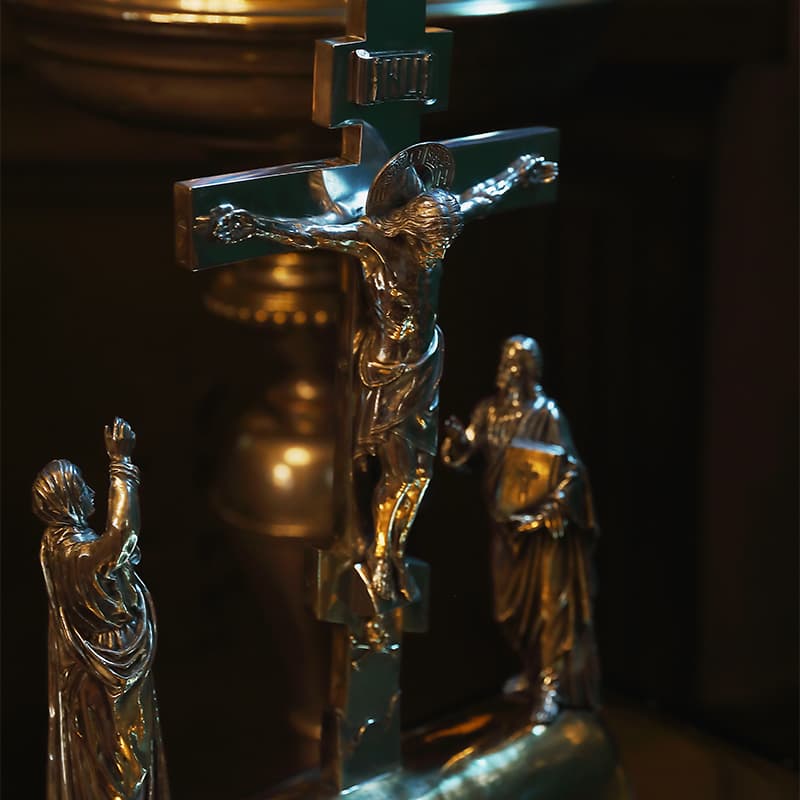
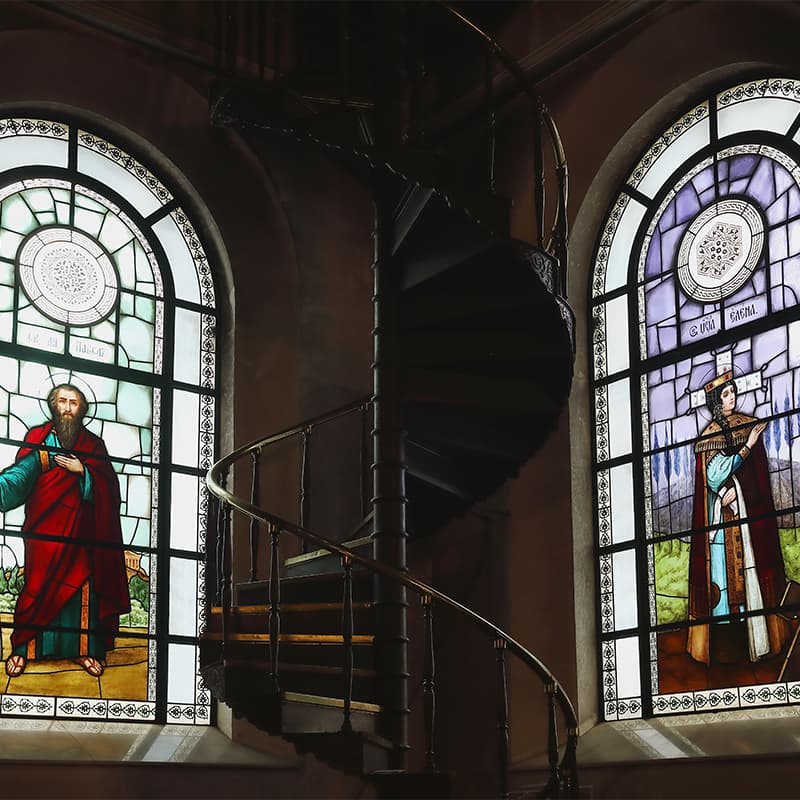

都心の只中での祈りは、現代人の心を安らぎで満たす。
Feature | 2024.07.24
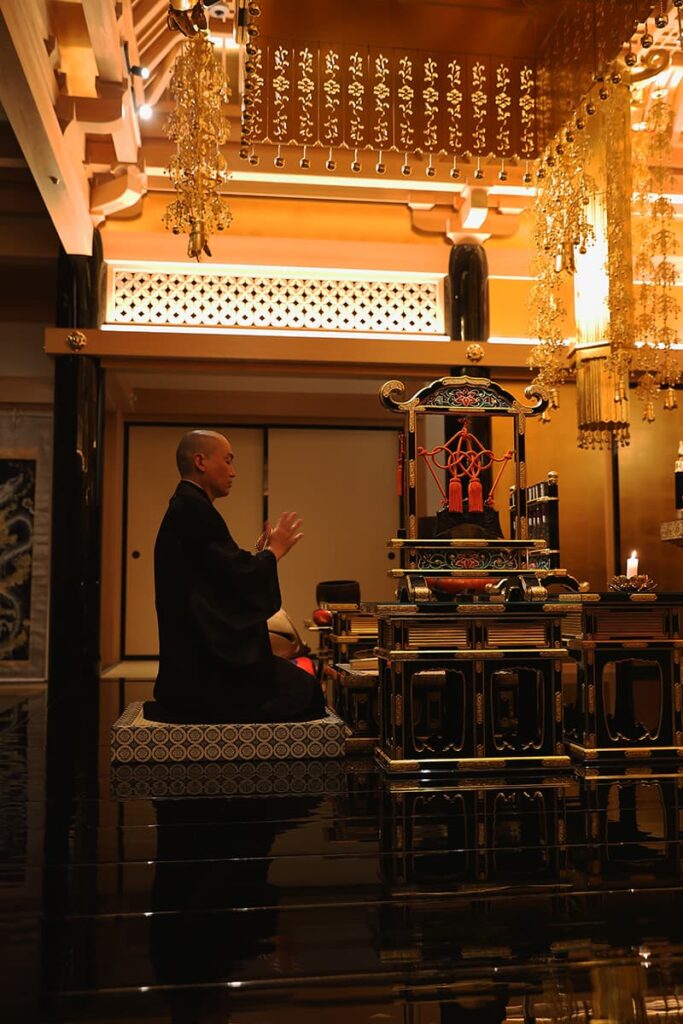
[ 瑞華院 了聞 ]
本堂に座り、先祖を思い、手を合わせる。そのとき僧侶は仏と遺族をつなぐ通訳者となる。そして祈りの声は極楽浄土へと届く。
都心の一等地、広尾。 大使館が多くありインターナショナルな雰囲気が漂うこの地に、 未来的であり落ち着きも感じられる、独特なデザインの建物がある。 ここが寺院であり、中には納骨堂があるなど誰も思わない。
瑞華院 了聞はテレビコマーシャルでお馴染みの都市型のお寺だ。建物に足を踏み入れると、そこに広がるのは贅沢な空間。庵治石や玄武岩などの本物の素材がふんだんに使われ、 緑青や浮造りなど職人の技による施しがなされている。
「この建物の7階に本堂があり、 そこで朝夕のお勤めが行われています」。 そう語りだしたのは浄土宗 瑞華院 了聞 福井威人 上人。 毎朝8時30分からお勤めと法話があり、 誰でも参加できるという。「寺はそもそも町に開かれているもの。 ここは、外見は少し入りづらいかもしれませんが、でも皆さんに気軽に立ち寄っていただきたいと思い、イベントやカルチャー教室を開催しています。 クラシックコンサートや落語など、多くの人に参加いただいています」。 お坊さんの法話は含蓄があり面白いし、お経は聞いていると深く落ち着く。ふらっと立ち寄ってそんな体験ができるのは素敵だ。「僧侶は通訳者だと私は思っています。僧侶が行うのは、お経の力で遺族と仏様をつなぐことです。 皆さんは南無阿弥陀仏とだけ唱えていただければいいのです」。
そもそも仏教では、 神などの絶対者に対する祈りはなかったという。しかし時代が進むにつれて長寿や除病などの現世利益を求めての祈りが始まり、定着してきた。「仏教では修行によって心理に目覚めることを目指します。ですので絶対者に祈るということはありませんでした。でも、それもひとつの考え方。私は墓参りも祈りだと思っています。手を合わせ、心を静め、先祖に語りかけ、極楽往生を願う。そうすることで現代人に必要な、心の平穏が訪れるのです」。
都心のなかで本当の安らぎを得ることができる、それが瑞華院 了聞での祈り。
Prayer in the city fills the modern mind with peace.
Sitting in the Main Hall, evoking ancestors, hands joined:
The monk interprets between Buddha and the bereaved,
and his prayers reach paradise.
In posh Hiroo, amidst embassies and an international atmosphere, stands a uniquely designed, futuristic, and serene building. It’s hard to believe this place is a temple with a columbarium inside.
Zuike-in Ryomon, known from TV commercials, is an urban temple. Inside, a luxurious space awaits, abundantly adorned with Aji stone and basalt and craftsmanship including verdigris and brushed finishes.
“The main hall for morning and evening services is on the 7th floor,” says Ijin Fukui, a monk of the Jodo sect at Zuike-in Ryomon. Services and dharma sermons are held daily at 8:30 a.m., open to all. “Temples are community spaces. Though this place may seem intimidating from the outside, we want everyone to feel free to drop by, so we host events and culture classes, including popular classical concerts and rakugo performances.”
The monk’s dharma sermons are profound and the sutra chants deeply calming. It’s wonderful to be able to drop in casually for this experience. “Monks are interpreters, connecting the bereaved with the Buddhas through the power of sutras. Just chant Namu Amida Butsu.”
Originally, Buddhism had no prayer to an absolute deity. However, over time, prayers for worldly benefits like longevity and disease prevention became established. “Buddhism aims for awakening to the psyche through practice, not prayer to a deity. But that’s just one way of thinking. Visiting graves is another form of prayer. By joining hands, calming the mind, speaking to ancestors, and wishing for rebirth in paradise, modern people can find peace of mind.”
True tranquility in the heart of the city—that is prayer at Zuike-in Ryomon.
